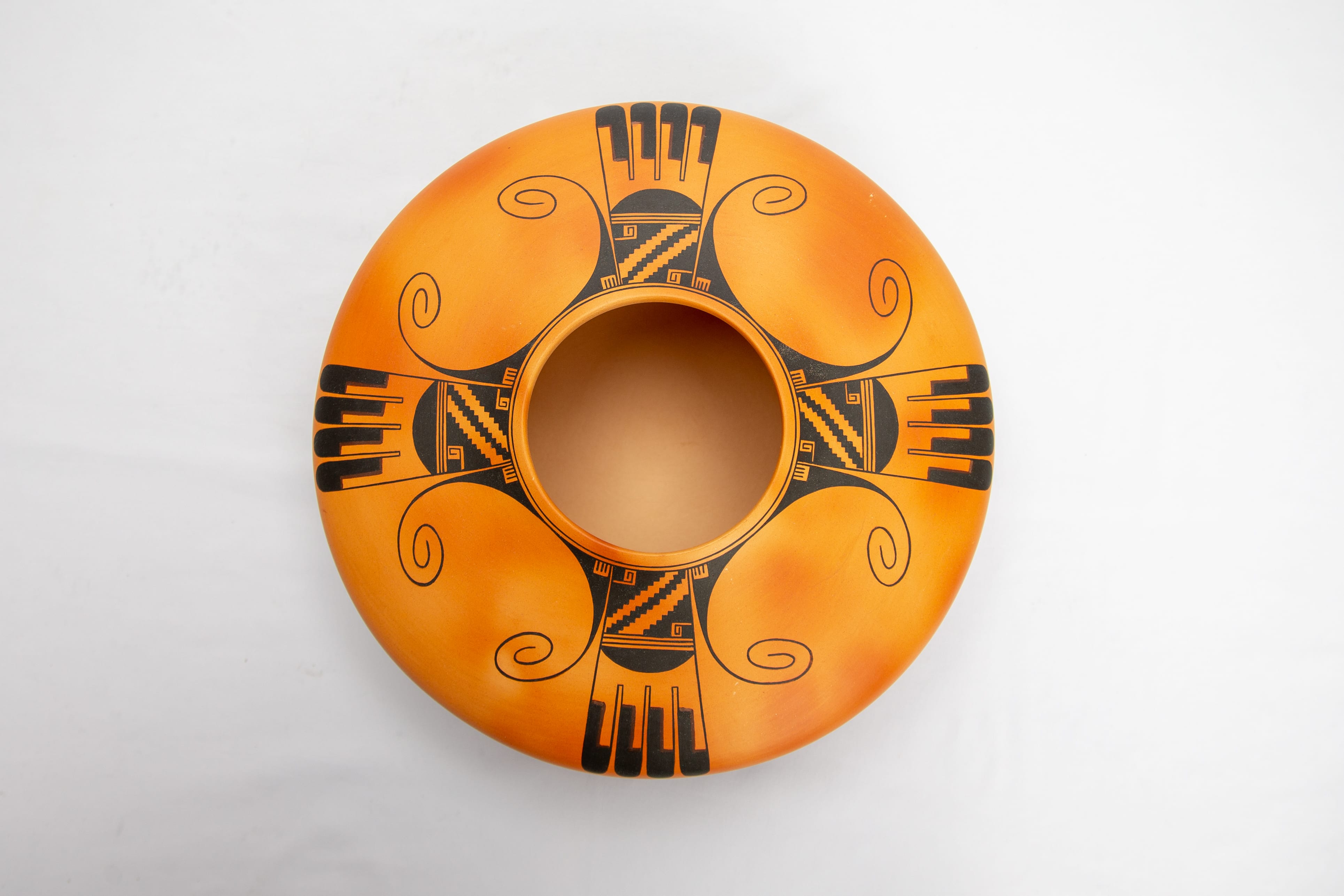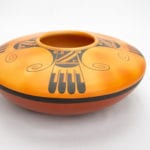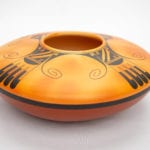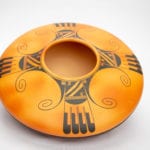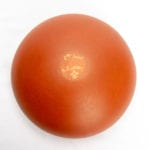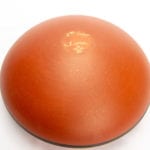This one pot had two makers, two lives, several owners, and is an example of persistent beauty, a modern rendition of Nampeyo’s more casual eagle-tail jar 2005-16.
As on Nampeyo’s jar, the design on 2017-09 is enlivened by 1) the contrast between the linear tails and the curvalinear wing elements amd 2) the use of negative space to frame the painted image. Like Nampeyo, color integrates the design, but here the technique is different: the color of the background integrates by highlighting the cross-shaped back design.
While the eage-tail design is often used (see “Category List”), no rendition is more elegant that than on pot 2017-09. The top design is (almost) monochromatic, black paint on plain clay, but the vivid blushing of the background contrasts with the design, and this combination is an eye magnet. The rich color and uneven blushing of the unpainted surface are evidence of variations in the heat of an outdoor, dung-fueled firing. Both Steve Lucas and Hisi (Quotskuyva) Nampeyo signed the pot and is documented as having been formed by Steve and painted by Hisi (Struever, 2001:92).
The form of pot 2017-09 (flying-saucer shape with a slight lip) was characteristic of prehistoric Sikyatki pottery and was adopted by Nampeyo. Her rendition of this design (2005-16) is painted on a pot of the same shape but with thicker walls than 2017-09. The walls of pot 2017-09 are unusually thin and even and thus this pot is surprisingly light for its size. When tapped with a finger, the pot rings with a somewhat high pitch. A pure high-pitch resonance is evidence that a pot was kiln-fired. The sound of this pot is less certain.
Apparently this jar was once part of the collection of Sharon and Willie Lyon and was published by the Wheelwright Museum in connecton with a 2001 exhibit at the museum (Struever, 2001:92). As detailed in the “Purchase History” below, the jar was subsequently owned by dealer Marti Struever, then sold at auction about seven years before I bought it. While being shipped to the high bider, the design was scratched by its wrapping paper; it was returned by the purchaser and then was repainted by either Hisi or Steve before finally being sold to me. The repainted design was fired-on; the pot was not merely over-painted. The original purchaser sent me a photograph of the pot before it was damaged and re-fired. Notice that the variation and intensity of the blushing were originally subtle:
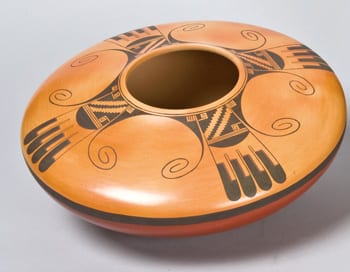
Original appearance of the seedjar after first firing.
I believe the increased blushing the pot is due to it having been dung-fired a second time and this double firing account for the fairly high-pitched sound when tapped with a finger.
The vivid and varied blushing of the pot is like a golden sunset of clouds. Against this background the black design is painted with a very precise and light hand and is repeated four times on a matte finish. The black paint is particularly consistent and dark and thus sharply contrasts with the blushed golden background. Each of the four renditions of design contain a set of four tails. Each tail has a black J-shaped area that incorporates the tip and extends to form a black rectangle. The unpainted surface of each tail merge into a unpainted area that connects the four tails. Easily overlooked is a maroon Z-shaped line that borders the black segement of each tail and separates it from the unpainted surface. The result is an almost subliminal variation of color that enriches the eagle-tail design.
The waist of the pot is decorated with an unbroken thick black stripe. Below, the bowl is covered with a micaeous red-maroon slip. A group of younger Hopi potters were trained by Dextra Quotskuyva, including daughter Hisi Quotskuyva’s companion Loren Ami, grandson Lowell Cheresposy, and nephew Steve Lucas. All of these potters at times have used the same red-maroon micaeous slip seen on 2017-09 to cover the lower half of their pots. (See 2011-23, 2011-26 and 2010-23).
Pot 2017-09 and two of Mark Tahbo’s creations (monochromatic jar 1992-02 and his bird-man plate 2018-08) are arguably the most elegant pots in this collection.

